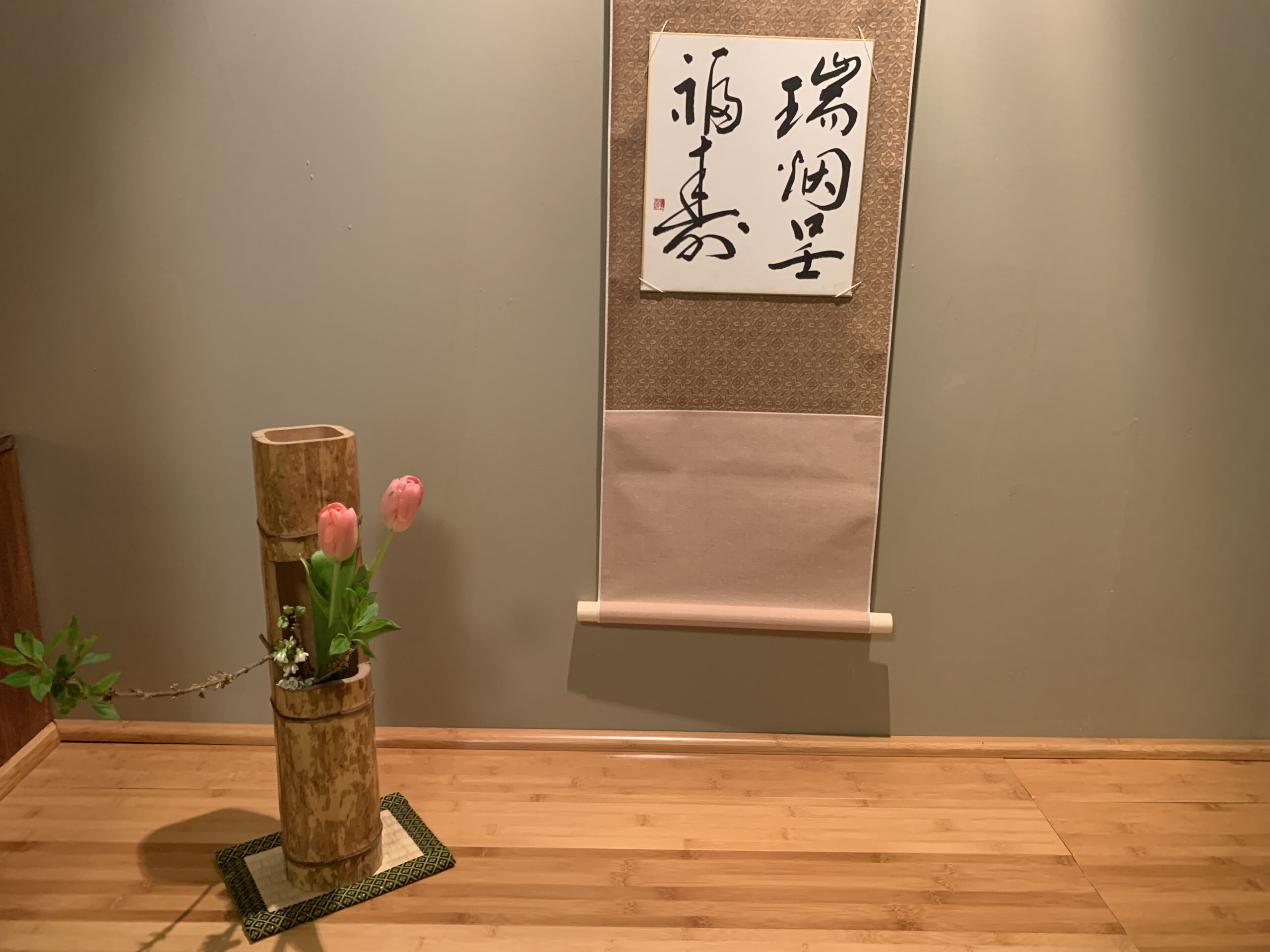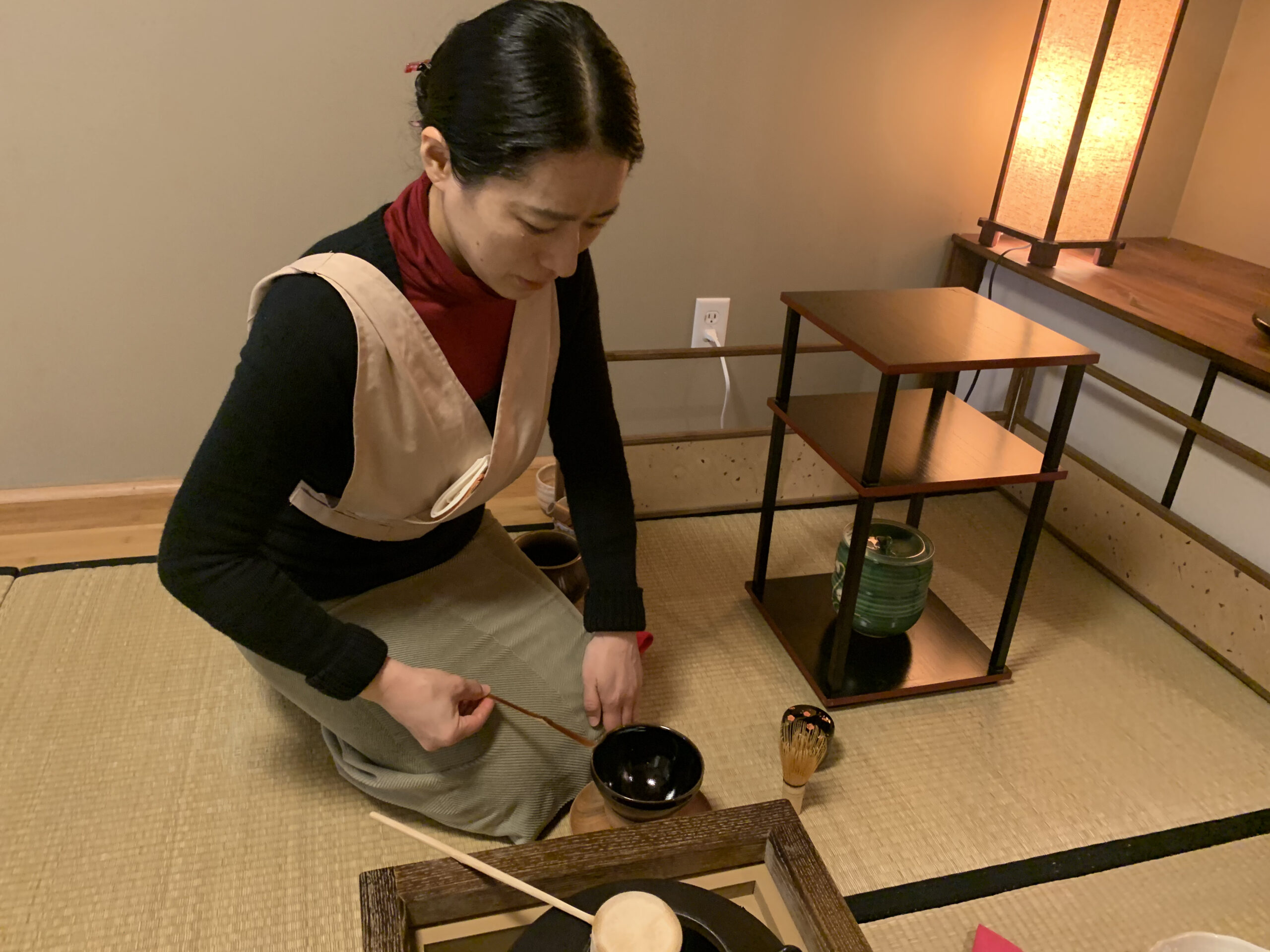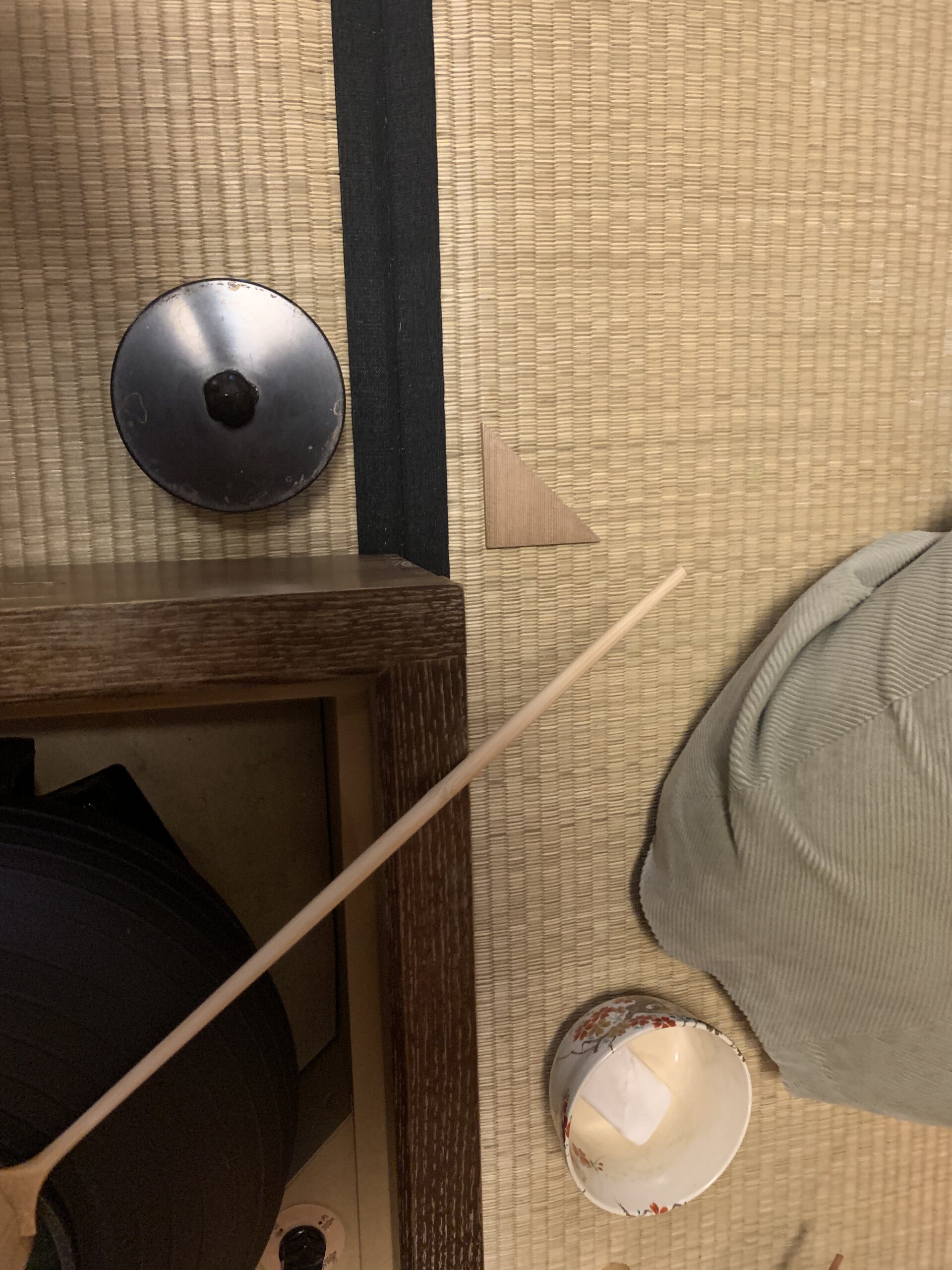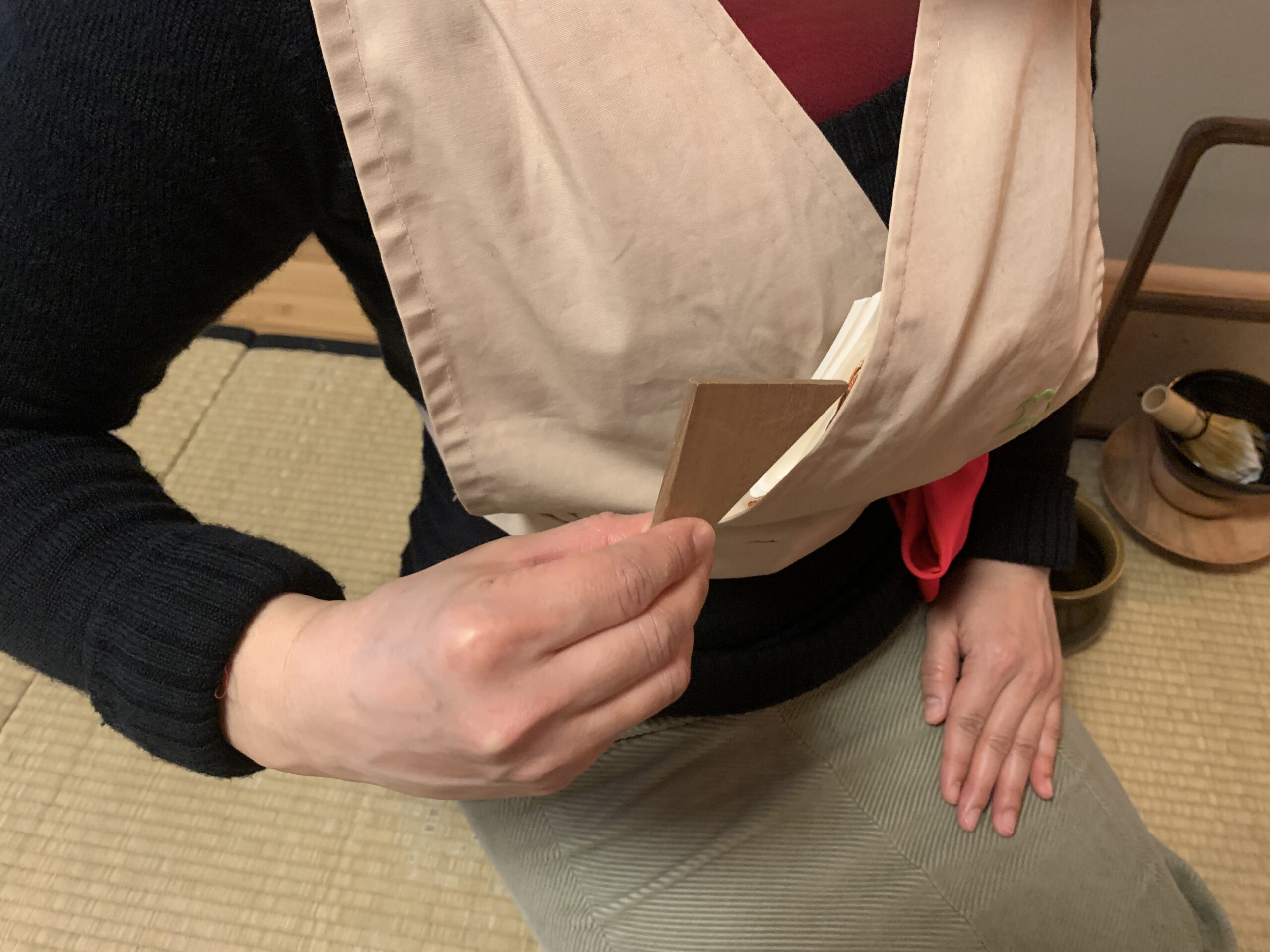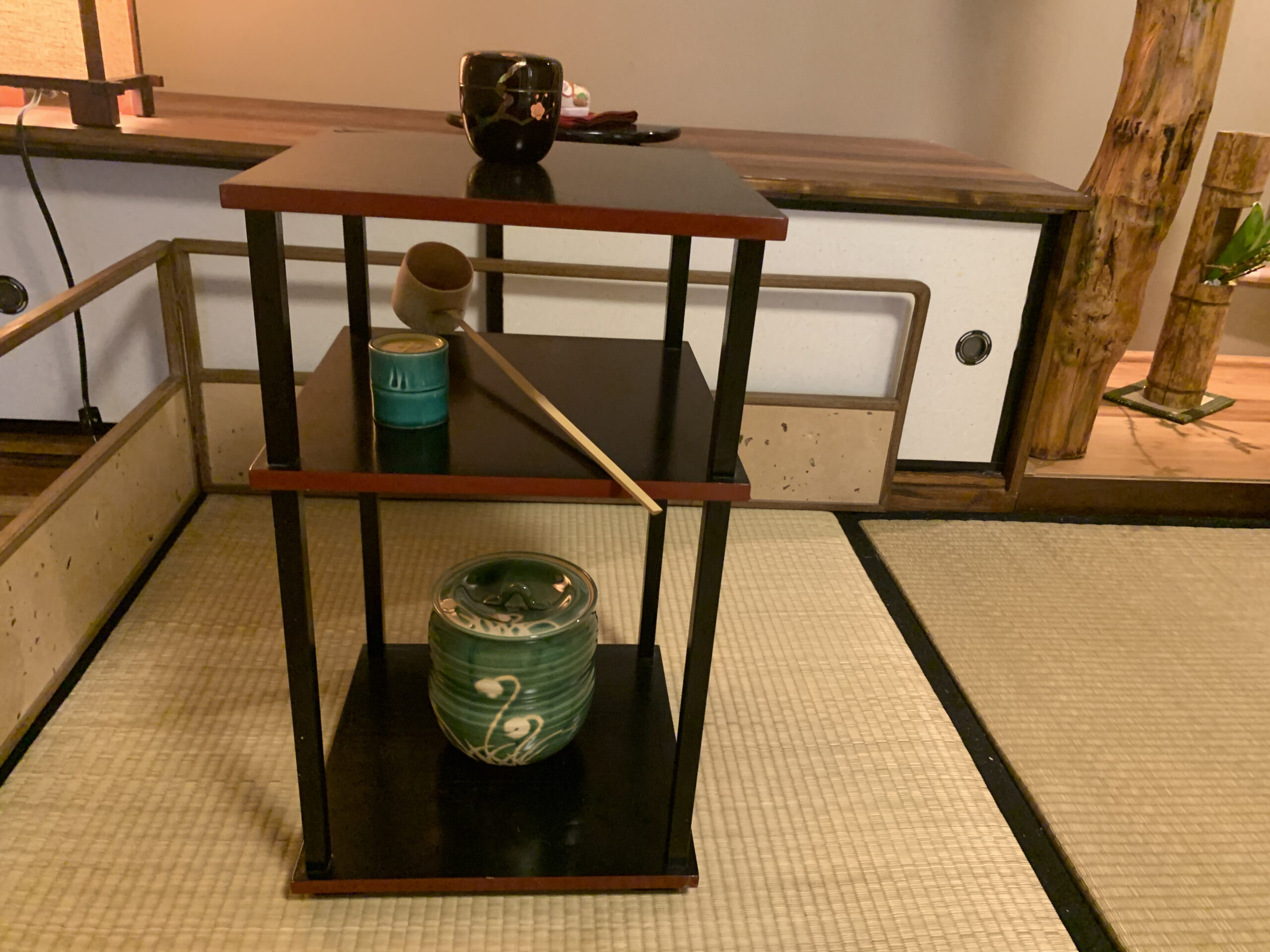先々週に、貴人点前をお稽古しましたので、貴人さんがお供を連れてきた場合を設定してする『貴人清次』で、貴人(すなわち清)点前の復習とお供(すなわち次)にお茶を点てるお稽古をしました。お軸は『瑞煙呈福寿』(ずいえんふくじゅをていす)です。小さい幸せが積もり積もって幸福な一生となるという意味だそうです。花はチューリップと梨の枝。
Recently, we practices two procedures: kinindate (for a nobleman) and kinin kiyotsugu (for a nobleman and someone who accompanied him). In the alcove I placed a tulip and a pear tree branch and then hung the scroll with zuienfukuju wo teisu, calligraphy that means “we lead a full life when we have many small experiences that bring happiness.”
お茶室に入ったら身分の差はなく、皆平等という茶道の精神に反するようなお点前ですが、現実には高貴な方とそのお供をお迎えする機会が多くあり、そのような場合のお点前を考案する必要があったのでしょうね。この点前をお稽古していると、貴人に法無しと言われ、何もしない貴人の前で、当時のお供の人たちがこまごまとお仕えしている姿が目に浮かぶようです。
It seems like this procedure goes against the principle of the tea ceremony: everybody is equal in the tearoom. However, in reality, there were many occasions to serve tea to a nobleman by himself or with someone else. The saying goes that there are no requirements for a nobleman participating in this procedure, and I can imagine a flustered servant hurrying around a nobleman who wouldn’t lift a thing in the tearoom.
